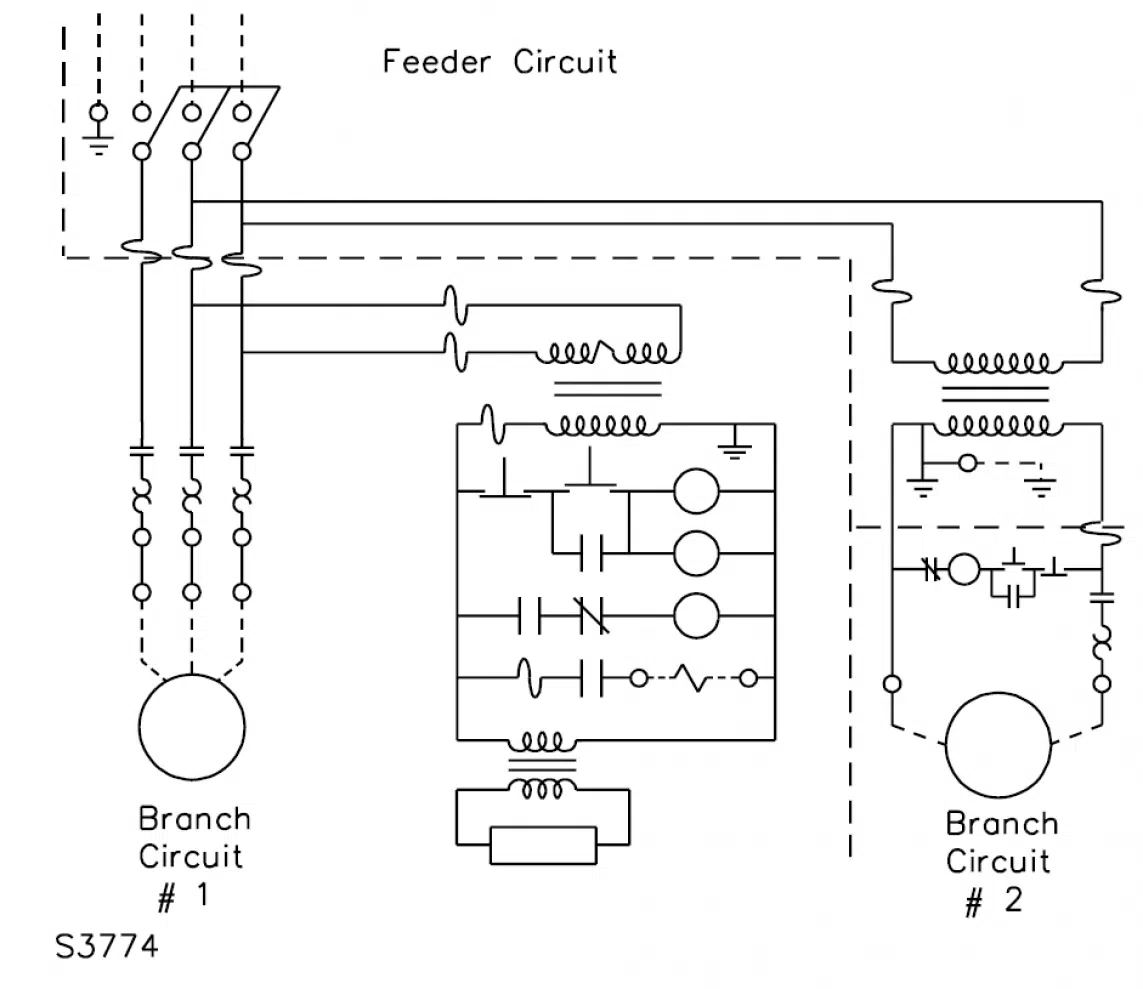Last edit: 20/03/2023

According to NEC Art.100 any circuit that controls another circuit through a relay or equivalent device can be considered a control circuit. This circuit can be upstream or downstream of the Branch Circuit Protection Device (BCPD).
The control circuit is usually supplied by a transformer that lowers the voltage below 600 V AC and has no current limits (UL508A). On the other hand, according to NFPA 79 the maximum voltage must not exceed 120 V AC or 250 V DC (9.1.2.2). Moreover, autotransformers cannot be used. The control transformer is not necessary if:
- the supply voltage is already 120 V AC;
- the maximum short-circuit current is less than 1000 A.
With regard to the protection devices that can be used in a control circuit:
- if the control circuit is downstream of a BCPD, Supplementary protections (UL1077) can be used, since, in case of short-circuit, the upstream BCPD is supposed to be able to interrupt the fault currents;
- if the control circuit is upstream of a BPCD, a UL489 cicuit breaker or a suitable fuse UL248 is required.
The control transformer can be protected only on the primary side (referring to Table 42.1) or, to avoid unwanted tripping, on both the primary and secondary side (Table 42.2).